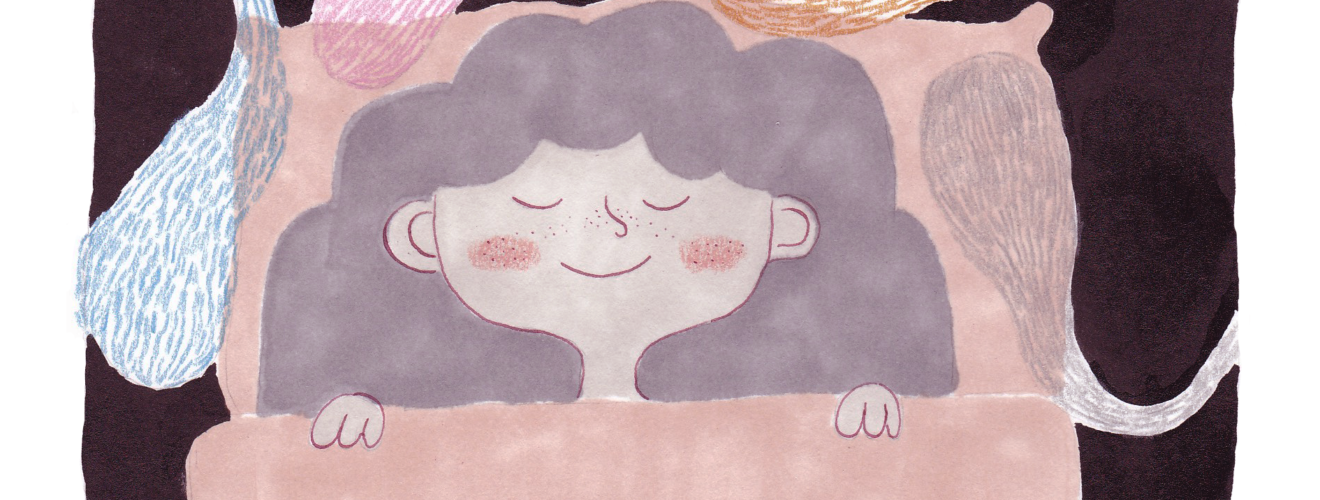Can you paint with all the colours of the wind? The science of coloured noise

Has anyone suggested a white noise machine after you complained about another night spent tossing and turning in bed? To explain what white noise is and whether it is the way to go for a good night’s sleep, we need to go back to the basics and define what ‘noise’ is.
It is easy to assume that noise is just another word for sound, but they are distinctly different. Sound can be music, your best friend’s laughter, or a crowd erupting in cheers after their team scores the winning goal. Noise, on the other hand, is generally an unwanted disturbance – construction outside your bedroom on an early Sunday morning, a baby crying on an aeroplane, or your neighbours arguing loudly. There are no set properties to differentiate sound from noise. What is considered noise can vary from person to person and the circumstances involved – the difference is more psychological than anything. Maybe you love being woken up to the sound of a jackhammer, and hey, you do you.
When it comes to relaxation, some people enjoy music, some enjoy silence, and others enjoy what is referred to as ‘coloured noise’. There are a few types that have fixed definitions within the sound engineering industry and others that are defined more colloquially. All colours of noise sound somewhat similar – think TV static or a radio between stations. White noise is probably the most well-known example. It contains sounds from every frequency that humans can hear. Because of the way our ears and brain process sounds, sounds with a higher pitch resonate louder to us than those at the other end of the spectrum. Due to this, white noise can sound high-pitched and unpleasant to some.

White noise spectrum showing how loud each frequency (pitch) is. Image credit: wikicommons
Pink noise, just like its white counterpart, contains noises from all frequencies we can hear but higher frequencies are dampened to counteract the perceived loudness of the high pitched tones. This takes the white noise and transforms its tinny ring into a more subdued, even sound. Brown noise takes the same concept to another level by greatly reducing the volume of high pitched sounds, resulting in what sounds almost like a distant waterfall.

Pink noise spectrum. Notice how the lower frequencies (higher-pitched sounds) are louder. Image credit: wikicommons

Brown Noise spectrum, which is very similar to the pink noise. Image credit: wikicommons
While white, pink, and brown are the most widely known and frequently-used colours of noise, there are a few more. At the opposite end of the spectrum from brown noise is blue, which is pitched much higher. While brown noise has a deep, bass-heavy rumble to it, blue noise is all treble and hissy. Grey noise is focussed on both ends of the spectrum and is used in studying hearing difficulties. Finally, the antithesis to all other colours is black noise. Just as black is the absence of all light, black noise is the absence of all frequencies- or, as you may call it, silence.
Now circling back to those white noise machines and why they supposedly help with falling asleep. When you prepare your room for bedtime, what do you do? Probably close the curtains, turn off the lights and make sure it’s quiet, right? It would seem counterintuitive to add noise to your sleeping setup, but it can be surprisingly helpful. Low-level, constant background noise, like white or pink noise, can help drown out other sounds, snoring partners or loud neighbours, that would otherwise keep you awake. In a silent setting, any small sound can set your brain off. This is most likely a remnant from neanderthal times long past, when a noise could potentially warn us of a predator nearby. Of course, in our modern day to day lives, this built-in alert system is superfluous. Not only can this background noise help you fall asleep faster, but it also helps you to sleep deeper and for longer periods of time, allowing you to wake up well-rested (or at least less exhausted). While there hasn’t been enough research done to conclusively state which coloured noise has the most sleep-enhancing qualities, it has been suggested that pink or brown noise are more conducive to sleep due to the distribution and volume of frequencies that gives them a lower and less abrasive sound profile than white noise.
At the end of the day, everyone is unique and the way each of us perceive sounds is different. One person may fall asleep to pink noise, while another may find it as infuriating as sharing the room with a mosquito and prefer white noise. As with everything, the proof of the pudding is in the eating, so check out some soundbites of different coloured noises to find your perfect lullaby1.
This article was specialist edited by Evangelos Christou and copy-edited by Dzachary Zainudden.









